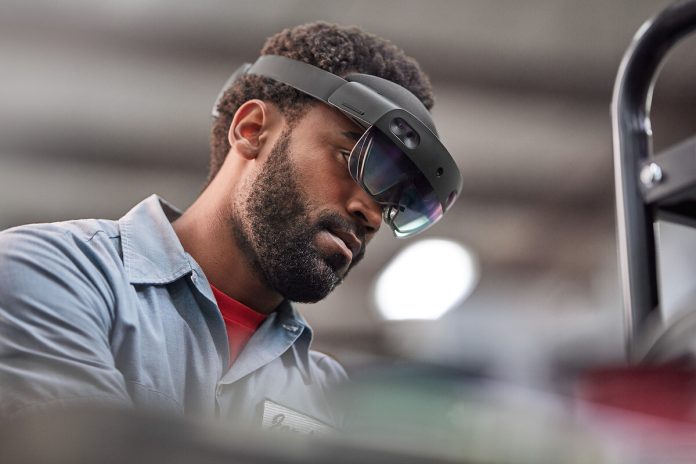Microsoft has officially confirmed to UploadVR that it has ended production of the HoloLens 2.
The company is informing its partners and customers that this is the final opportunity to purchase the device before remaining stock runs out.
Although production has ceased, the HoloLens 2 will continue to receive essential software updates, including those addressing critical security issues and software regressions, until December 31, 2027.
However, from January 2028, Microsoft will cease providing software support for the device.
For users of the original HoloLens, which was launched in 2016, software support will end on December 10 of this year, just over two months from now. Production of the original HoloLens had already ended in 2018.
HoloLens 2: A Groundbreaking Device
When HoloLens 2 launched in 2019, it came with significant improvements across the board compared to the original version.
It featured a wider field of view, higher resolution, eye-tracking capabilities, enhanced hand-tracking, and a more powerful computing unit housed at the rear of the strap for a better, more balanced, and comfortable design.
At the time of its release, passthrough headsets were still years away, and Magic Leap was primarily focused on the consumer market, giving HoloLens 2 dominance in the enterprise augmented reality (AR) space for several years.
While the HoloLens 2 improved on the original in many ways, its field of view, though expanded, was still relatively narrow, and the displays actually saw some reductions in image quality.
Shortly after the release of HoloLens 2, Magic Leap shifted its focus to enterprise solutions and launched the Magic Leap 2 in 2022. The newer device boasted a wider field of view and a more powerful computing unit.

Around the same time, companies like Varjo introduced high-resolution passthrough headsets, and more recently, Apple and Meta have entered the market with their own viable passthrough devices. As a result, the HoloLens 2 has struggled to stay competitive in recent years.
Although Microsoft hinted at the possibility of a HoloLens 3 about two years ago, a report from Business Insider later claimed that the project had been canceled due to internal “confusion and strategic uncertainty.”
Further complicating the future of Microsoft’s mixed reality efforts, Alex Kipman, the long-standing leader of the company’s mixed reality division, left Microsoft in 2022.
Both 2023 and 2024 saw significant layoffs in the company’s mixed reality division, further dampening hopes for a next-generation HoloLens.
IVAS and Microsoft’s Partnership with Meta
Despite the discontinuation of HoloLens 2, Microsoft has reiterated its commitment to the militarized version of the device, known as HoloLens IVAS (Integrated Visual Augmentation System).
The U.S. Army is planning a company-level operational test of the IVAS in early 2025, with a decision on whether to proceed to full-scale production expected by late 2025.
Meanwhile, in the general enterprise market, Microsoft has shifted its focus away from hardware and toward partnerships, most notably with Meta.
This collaboration has already brought Xbox Cloud Gaming and Office web apps to Meta’s Horizon OS on Quest headsets, and soon, users will be able to automatically extend their Windows 11 laptops by simply looking at them through Quest devices.
HoloLens 2’s discontinuation coincides with Meta’s recent reveal of a prototype for its own transparent AR device, codenamed Orion.
This device promises a much wider field of view while fitting into a form factor resembling a thick pair of glasses.


